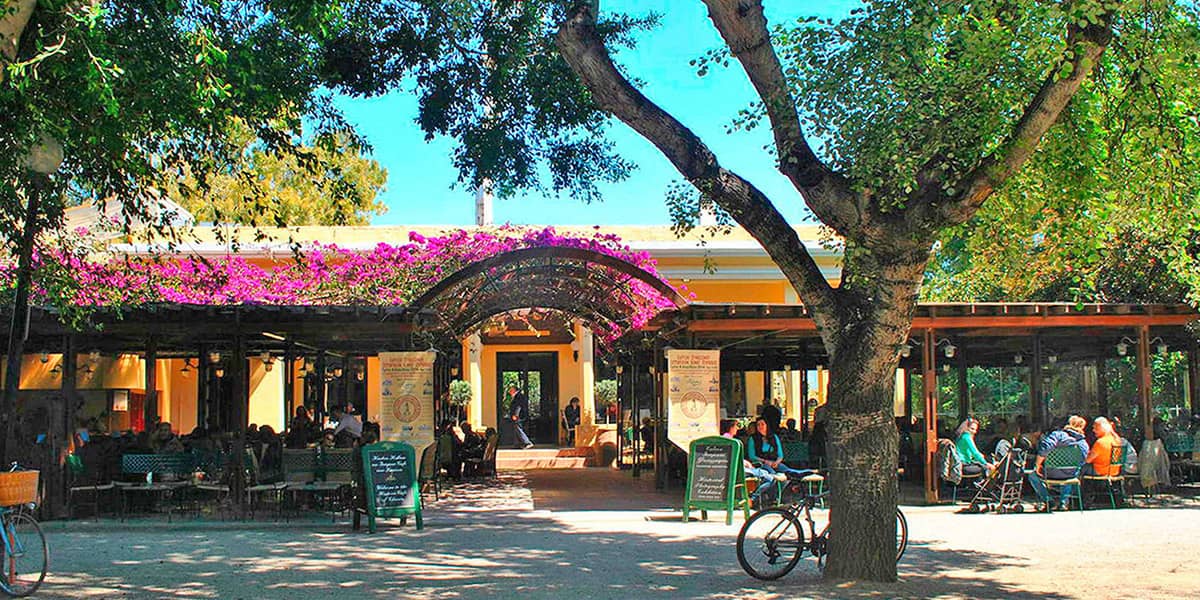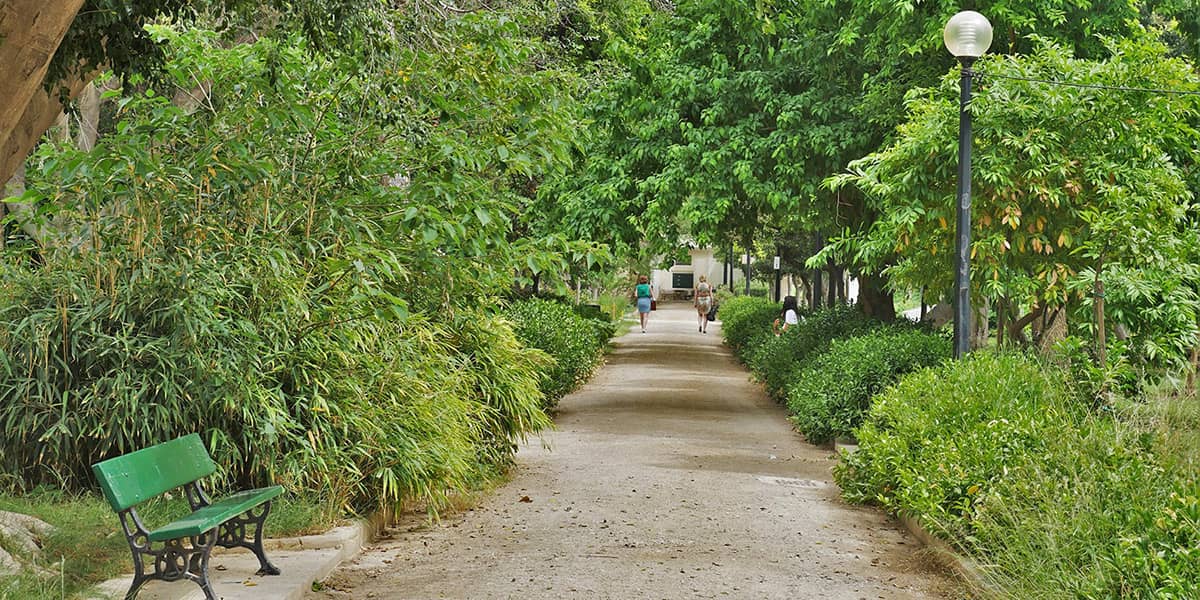
15°C
In the last years of the Turkish rule, when the city was suffocating inside restrictive walls, the need for free space for recreation was very intense.

Wishing to meet this need, Reouf Pasha ordered and supervised the construction of the Municipal Garden of Chania, in 1870. The garden was designed according to the European standards of the time, and became the first public benefit project of the city. Footpaths and flowerbeds were designed, evergreen trees and flowers were planted, sculptures were placed; one of them was a statue of Hermes, found in Ancient Kidonia.
The garden served as a place for recreation for the locals, as well as for the troops of the Great Powers.
Later, in 1918, renovation works were done, so new trees and flowerbeds were added. In addition to that, the construction of a clock tower (a focal point of the city, located at the north-eastern side of the Municipal Garden) began in 1924 and was concluded in 1927.

A building that can be seen in the middle of the garden housed the Cretan Parliament in the years of the Cretan State, and it was later used as a theatre, a café and a cinema. In May 1980, the first municipal cinema in Greece began to operate in the same building, and it still opens every summer.
The last renovation of the garden was completed in March 2023, involving the care and renewal of the greenery, maintenance of the playground, and the refurbishment of the existing small artificial lake.
Around the Municipal Garden, jasmine plants are planted. The traditional flower of the city of Chania.
Architecture
Open-Well maintained
Cretan State, Modern Age, Ottoman period
Α. Papandreou & Tzanakaki
For the Rural Greece accessibility is fundamental to enhancing an inclusive tourism experience. Following the principles of inclusion and equality, the epaithros Rural Tourism Network and its member businesses are constantly working to enhance the tourism services provided, ensuring that all visitors have the opportunity to experience the authentic beauty of the Greek countryside.
Sustainability in tourism refers to a way of developing tourism that respects and protects the environment while strengthening the local economy and preserving cultural traditions. The aim of sustainable tourism is to provide unique and authentic experiences for visitors without harming the natural and social environment, while ensuring that local communities benefit from tourism activity.
This type of tourism is based on three pillars:
With sustainable tourism, visitors can have authentic experiences, knowing that the impact of tourism on the region is positive and lasting for future generations.
For Rural Greece, localism is one of the most important factors for the development of sustainable tourism, as it promotes a strong link between the tourism product and the local society, economy and culture. Through localism, visitors get the opportunity to explore authentic elements of the destination, such as local products, traditions and culture. This not only boosts the local economy, but also helps to sustain and strengthen local businesses, creating new jobs and supporting the development of local communities.
Furthermore, localism contributes to the sustainability of the tourism sector, as it reduces the use of resources from other regions and encourages the use of local goods and services, reducing the ecological footprint of tourism activities. Thus, integrating localism into tourism practices enhances sustainability awareness, both among visitors and local businesses, creating a more responsible and sustainable tourism destination.